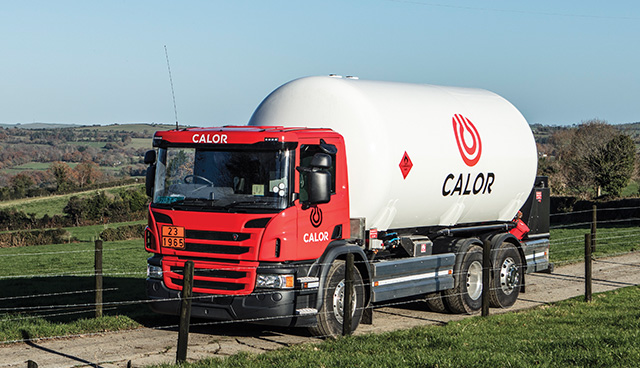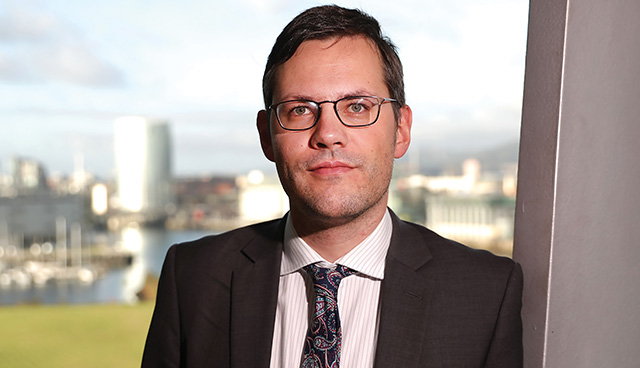
Calor: Delivering a cleaner fuel mix for rural Ireland
12th November 2018
The future of the EU Emissions Trading System
12th November 2018Energy storage for a sustainable future

Dr Beth Massey, Head of Research at the International Energy Research Centre, offers key insights into energy storage and its relevance to Ireland’s sustainable energy future.
 Opening the discussion, Massey provides an overview of her work at the International Energy Research Centre. “The IERC is an industry-led research group, funded by the Department of Communications, Climate Action and Environment and the Department of Business, Enterprise and Innovation. Over the past six years, we have developed nine industry collaborative research projects, including EU awards,” says Massey. “We have been successful in integrating and collaborating with industry and have delivered €10 million back to Ireland in terms of industry cash and outputs from the research.”
Opening the discussion, Massey provides an overview of her work at the International Energy Research Centre. “The IERC is an industry-led research group, funded by the Department of Communications, Climate Action and Environment and the Department of Business, Enterprise and Innovation. Over the past six years, we have developed nine industry collaborative research projects, including EU awards,” says Massey. “We have been successful in integrating and collaborating with industry and have delivered €10 million back to Ireland in terms of industry cash and outputs from the research.”
According to Massey, the International Energy Research Centre focuses its work across three main areas: “We look at the nature of technology regarding energy and local power generation. We also look closely at how that technology may influence policy and how that technology can also affect real behavioural change,” she explains. “The third aspect of our work concerns looking at and analysing data, and what that resulting data analysis can tell us about energy consumption, including usage trends and more.”
The concept of timing is of great significance when it comes to energy storage, according to the Head of Research. “Energy storage has an important aspect of timing to it, depending on what it is applied to,” she explains. Providing a brief overview of various storage timeframes, she outlines the various applications of seasonal, diurnal, hours and minutes and seconds thermal energy storage. “In terms of seasonal storage, we have seen strong examples coming out of Sweden, and those examples are normally seen at a building level,” says Massey. “What we have seen are examples of heat being stored under the building for prolonged periods of time, and then that heat is deployed some time later when needed in winter months.”
A growing sector
Massey provides some impression of the current scope of energy storage technologies, with various electrical, mechanical, thermal, chemical and electrochemical methods of storage rapidly diversifying the sector’s offering. “We are mainly concerned with electrochemical methods, primarily classic batteries and flow batteries. We are experts in electricity storage applications, in terms of energy arbitrage and balancing that supply and demand, whilst providing ancillary services back to the grid. When you look at different types of storage, you must look at the options and how they are applied and integrated into the system. So, it’s not just about the technology itself, but also what the technology connects to.”
Ireland and their neighbours in the United Kingdom are rapidly emerging as industry leaders in the field of battery energy storage, according to Massey. “In the UK, Anesco are currently working on plans to construct a 300MW utility, with the capability for 300MW battery storage by 2020,” she says. “Beyond plans such as that of Anesco’s, we can also see that Drax Power Station is a shining example of capability in this part of the world,” says Massey, referring to the large biomass and coal-fired power station neighbouring the River Ouse in North Yorkshire. “According to Power Engineering International, with up to 200MW of battery storage in planning, the Drax Power Station has ambitions to be one of the largest battery storage facilities in the world. In Ireland, the Rhode facility in County Offaly is Europe’s first hybrid flywheel battery storage plant, which opened in 2015, and provides over 400KW,” she continues. “So, we can see that Ireland is a leader in technology and innovation, and the question must now centre on how we can integrate all of these new technologies.”
“This level of transformation requires a lot in terms of education and engagement. That means enabling the consumer to realise the system they are a part of, and fundamentally aiding them in their path towards becoming a prosumer.”
Storing for the community
Massey emphasises the role played by the International Energy Research Centre in community level energy storage. “When it comes to this type of energy storage, we are currently involved in an innovative project called Community Grid,” she says, “and within that project we are very pleased to have Mpower as our lead industry. We are also delighted to say that we now have ESB Networks onboard.” Working with such organisations is integral to the work of the Research Centre, according to Massey. “These partners can help us to build our knowledge not only of the grid, but also in the commercialisation that is necessary when taking these systems and integrating them together.
“The Community Grid is developing a consumer-to-prosumer model for distributed generation and storage. This level of transformation requires a lot in terms of education and engagement. That means enabling the consumer to realise the system they are a part of, and fundamentally aiding them in their path towards becoming a prosumer,” says Massey. “Some people want to do that, and some people don’t. Some people don’t understand the full value of what is being offered to them in terms of a revenue stream and what it can provide to the national grid.”
Massey emphasises the point that efforts are constantly being made to innovate further on the technologies in energy storage. “We have a project called IMPRESS, which is an acronym for ‘Improvement of Redox Flow Energy Storage Systems’. The project will deliver from a small, 1KW battery in the lab at Queen’s University Belfast to a 125KW battery in the field, placed at the Bombardier site where they have on-site PV, anaerobic digestion and waste-to-energy capabilities,” explains Massey. “Again, this is about providing flexibility and services to the grid.”
Innovation for the future
CHP engines require large thermal storage for efficient operation and load balancing, explains Massey. “Thermal stores are often huge structures, and the planning and expense required to build them can be a nightmare. So, an option may be to introduce innovations such as phase-change materials. In a project with DIT, we delivered a stainless-steel phase-change material tank, which provides up to 6.5x volume reduction over sensible storage. Other benefits include reduced energy losses, better temperature control for CHP or bio-mass applications and offer strong alternatives for distributed thermal storage. Some of the challenges include heat extraction rates. Further research in this important area is needed,” she continues.
Coming to a better understanding of the gaps in industry knowledge is critical to the progression of battery storage technology, concludes Massey. “The way that we close those gaps is about finding the gaps in our technology and showing where we can innovate in the future. We need to focus and agree on a research priority. Empirical data can show us how to make those improvements, and investors will want to see how this innovation is benefitting them in the market. So, it’s about asking what benefits our partners and how we can take it into the market space.”
